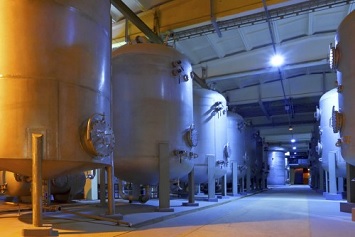According to the EPA, the Agency’s final rule amending the Chemical Data Reporting (CDR) requirements under Section 8(a) of the Toxic Substances Control Act (TSCA) has three primary objectives.
- Make regulatory updates that align with new statutory requirements contained in the 2016 TSCA Amendments.
- Improve the CDR data collected to support the implementation of TSCA.
- Reduce the burden for certain CDR reporters.
“In addition, these regulatory modifications may result in additional information to EPA and the public that is currently not collected; improve the usability and reliability of the reported data; and ensure that data are available in a timely manner,” states the Agency.
In a separate action, the EPA is extending the submission deadline for 2020 CDR submissions from September 30, 2020, to November 30, 2020. This is a onetime extension to provide additional time for the regulated community to familiarize itself with the changes to the CDR reporting requirements.
Increased Cost and Reduced Burden
From a compliance standpoint, the most significant part of the final rule revises requirements for confidential business information (CBI) claims reporters make to align with the 2016 amendments, which require substantiation for most such claims. The rule includes an update to the questions reporters must answer to substantiate their CBI claims; data elements that cannot be claimed as confidential are also identified. Interestingly, while the Agency estimates that the full package of revisions will increase the overall cost of the rule by about $2 million a year for the 5,660 sites expected to report in 2020, the changes to the CBI requirements are expected to decrease the burden by 14,000 hours and $1.1 million. In a cost analysis prepared when the revisions were proposed in April 2019, the Agency stated:
“The reduced amount of information subject to confidentiality limitations will facilitate greater inter-agency and public sharing of data and will decrease the number of claims of confidentiality, which will increase the transparency and public accessibility of the CDR. Clarification of which data elements can be claimed as confidential will improve the consistency of EPA’s review of CBI substantiation information and will decrease the need for multiple conversations between EPA and reporters about substantiation responses, thus reducing burden for the Agency and for reporters.”
While reporters may see a reduction in the cost of preparing CBI claims, this is not necessarily a positive development for industry because the rule prohibits CBI claims certain data reporters may prefer to keep confidential.
Additional revisions are generally intended to simplify reporting. For example, one new provision provides two reporting mechanisms that allow comanufacturers to separately report directly to the EPA using the Agency’s electronic (e-CDRweb) reporting tool.
Other changes modify or add reportable data elements (e.g., processing and use codes, North American Industry Classification System (NAICS) codes, byproduct percentage, chemical function, and parent company) and are expected to increase the CDR burden by 188,000 hours and $14.5 million, says the EPA.
Background
The CDR regulations require that every 4 years, U.S. manufacturers of certain chemicals listed on the TSCA Inventory to report to the EPA the identity of chemical substances manufactured for all years since the last principal reporting year. For example, for the 2020 submission period, the principal reporting year is 2019, and the last principal reporting year for the 2016 submission period was 2015. Reporting during the 2020 submission period covers the manufacture of chemicals in 2016, 2017, 2018, and 2019. To help minimize reporting burden, detailed information is required only for the principal reporting year (2019); this information includes a breakout of the production volume to provide separate volumes for domestically manufactured and imported amounts. Generally, reporting is required for substances whose production volumes are 25,000 pounds (lb) or more at any single site during any of the calendar years since the last principal reporting year. However, a lower threshold applies to chemical substances that are the subject of certain TSCA actions.
Persons domestically manufacturing or importing chemical substances are required to report information such as company name, site location, and other identifying information; production volume of the reportable chemical substance; and exposure-related information associated with the manufacture of each reportable chemical substance, including the physical form and maximum concentration of the chemical substance, the number of potentially exposed workers at the reporting site, and certain processing and use information. Under the CDR, submitters report information to the extent that it is “known to or reasonably ascertainable [by a person],” which means “all information in a person’s possession or control, plus all information that a reasonable person similarly situated might be expected to possess, control, or know.” Reported information can be claimed as confidential, with certain exceptions.
In 2016, the 5,660 sites reported approximately 8,700 chemicals, resulting in close to 42,500 chemical reports.

Small Manufacturers
One important item included in the proposed CDR revisions, but not in the final rule, is an update to the size standards definition for small manufacturers relevant to reporting and recordkeeping requirements. TSCA Section 8(a) generally excludes small manufacturers and processors of chemical substances from the reporting requirements. However, the EPA is authorized by TSCA Section 8(a)(3)(A)(ii) to require reporting from small manufacturers and processors with respect to any chemical substance that is the subject of a rule proposed or promulgated under TSCA Sections 4, 5(b)(4), or 6; that is the subject of an order in effect under TSCA Sections 4 or 5(e); that is subject to a consent agreement under TSCA Section 4; or that is the subject of relief granted pursuant to a civil action under TSCA Section 5 or 7.
The EPA proposed two standards to define small manufacturers:
- First, a manufacturer (including importer) of a substance is small if its total annual sales, when combined with those of its parent company (if any), are less than $110 million. However, if the annual production or importation volume of a particular substance at any individual site owned or controlled by the manufacturer or importer is greater than 45,400 kilograms (100,000 lb), the manufacturer (including importer) will not qualify as small for purposes of reporting.
- Second, a manufacturer (including importer) of a substance is small if its total annual sales, when combined with those of its parent company (if any), are less than $11 million, regardless of the quantity of substances produced or imported by that manufacturer (including importer).
The EPA estimated that the definitions would eliminate reporting entirely for 93 industry sites and reduce reporting by eliminating the need to report at least one chemical for an additional 129 industry sites. The definitions would not apply to chemical processors.
In the final rule, the Agency indicates that it will promulgate the proposed small manufacturer definitions in a separate rulemaking.
CBI
The 2016 amendments include mandated new procedural requirements for the submission and Agency management of CBI claims, including new substantiation requirements, a certification requirement, and a requirement for Agency review of specified CBI claims within 90 days after receipt of the claim. The rule implements and facilitates the new TSCA requirements. Specifically:
- Substantiation is required for all confidentiality claims except for information exempt from substantiation under TSCA Section 14(c)(2).
- Substantiation is not required at the time the claim of confidentiality is made for five production volume data elements (so, for the 2020 reporting cycle, the volume domestically manufactured in 2019, the volume imported in 2019, and the total production volume for each of the 3 years 2016 through 2018). For each reported chemical, total production volume is reported for each of the years since the last principal reporting year—except for the current principal reporting year, for which the production volume is reported as domestically manufactured and imported volumes.
- For joint submissions, the primary submitter must identify whether the supplier information, including the supplier identity and chemical substance name (trade name), is confidential. Because the EPA interprets these data elements as “[i]nformation identifying a supplier” under TSCA Section 14(c)(2)(C), substantiation of the confidentiality claims for this information will not be required at the time of submission.
- The authorized official submitting confidentiality claims must certify that all claims for confidentiality are true and correct and that all information submitted to substantiate such claims is true and correct. In addition, all persons asserting a confidentiality claim must include the statement described in TSCA Section 14(c)(1)(B), and the authorized official must certify that this statement is true and correct.
- The following data elements cannot be claimed as confidential because they constitute general descriptions of processes, functions, and uses, including information that customarily would be shared with the general public or within an industry or industry sector:
- Certain industrial processing and use data elements—elements directly related to how the chemical is used or processed (that is, the type of process or use); the industrial sector; and the industrial function.
- Certain consumer and commercial use data elements—elements directly related to how the chemical is used (that is, the product category); whether the chemical is used in commercial or consumer products; whether the chemical is likely to be used in children’s products; and the function of the chemical in the consumer or commercial product.
- Submitters may continue to assert claims of confidentiality for the following processing and use data elements because they do not offer a general description:
- Certain industrial processing and use dataelements—percent production volume, number of sites, and number of workers.
- Certain consumer and commercial use data elements—percent production volume, maximum concentration, and number of commercial workers.
A set of standard questions, set forth in 40 CFR 711.30(b), applies to all nonexempt CBI claims. In response to comments received on the proposal, the Agency says it modified the questions to facilitate clarity and understanding and to help ensure that submitters are correctly and appropriately substantiating their confidentiality claims.
Additional Revisions
The final rule also:
- Replaces certain processing and use codes (industrial function and commercial/consumer product use) with codes based on the Organisation for Economic Co-operation and Development’s (OECD) functional use and product and article use codes. The EPA is also adding the requirement to report the OECD-based functional use codes for consumer and commercial use information.
- Adds a requirement to report the NAICS code(s) for the site of manufacture.
- Modifies the requirement to indicate whether a chemical is removed from the wastestream and recycled, remanufactured, reprocessed, or reused.
- Adds a voluntary data element to identify the percent total production volume of a chemical substance that is a byproduct.
- Requires the secondary submitter of a joint submission to report the specific function of the chemical along with the percentage of the chemical in the imported product.
- Modifies the reporting of parent company to require the use of a naming convention; adds the requirement to report a foreign parent company, when applicable; and codifies reporting scenarios in a new definition for highest-level parent company.
- Simplifies the reporting process by providing two reporting mechanisms for comanufacturers by enabling a multireporter process for reporters to separately report directly to the EPA within the e-CDRweb reporting tool.
- Adds exemptions (1) for specifically identified byproducts that are recycled in a site-limited, enclosed system and (2) for byproducts that are manufactured as part of nonintegral pollution control and boiler equipment.
- Clarifies regulatory text by removing outdated text and making other improvements.
The final rule is effective 30 days after its publication in the Federal Register.


